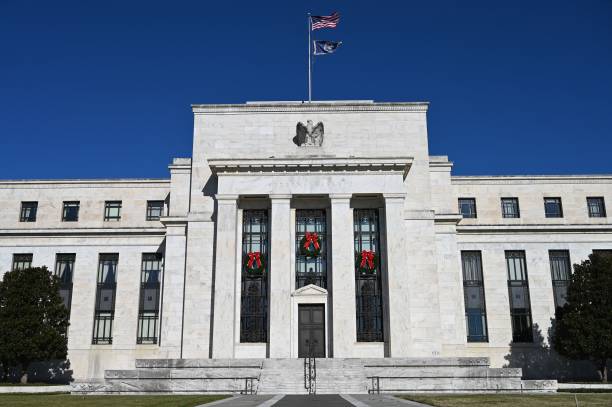26 Jan , 2022 By : Kanchan Joshi

Concerns about an impending rate hike by the US Federal Reserve have sparked a global stock sell-off. Investors will watch Fed chairman Jerome Powell’s comments on inflation and growth outlook. Mint explains the importance of the Federal Open Market Committee (FOMC) meeting:
What are the expectations?
The US central bank may tighten monetary policy for the first time after it reduced borrowing costs to near-zero in 2020 to counter the economic impact of the pandemic. Fed funds futures, which track short-term rate expectations, have priced in a total of four rate increases this year. Goldman Sachs economists see a risk that the Fed will tighten monetary policy more aggressively than anticipated. It is also expected to give the final set of instructions on bringing its asset purchase programme to an end. That process began last November, and at current pace, will come to a close in mid-March, around the time the first rate hike may occur
What has the US Fed done so far?
As the pandemic broke out, the US Fed began a quantitative easing programme, where it would purchase $120 billion of bonds every month to ensure ample liquidity. Inflationary pressures, supply-demand mismatches, and a jobs recovery prompted the Fed to change tack in the second half of 2021, and the Fed in November said it will reduce its bond purchases by $15 billion every month. Just a month later, this was doubled to $30 billion, quickening the process of tapering. Also, the money parked in Fed’s reverse repo continued to rise, touching $1.6 trillion in December 2021, indicating a liquidity surplus.
How does the rate decision impact India?
Like other emerging markets, India also stands to suffer when US bond yields rise, resulting in capital outflows and pressure on currency. During the 2013-14 ‘taper tantrum’, India had to take several steps to support the rupee and stabilize capital flows. India is in a better position now with record forex reserves, inflation within the RBI’s tolerance band and a stable currency.
What about fund flows?
Typically, a rate hike in the US leads to foreign fund outflows from emerging markets, including India. Indian markets have been facing selling pressure since 18 January, with both the Sensex and the Nifty shedding over 6% in a week. Relentless FII selling has drained $1.26 billion from Indian equities in January so far. But domestic institutional investors (DIIs), including mutual funds, insurance firms, pension funds, and banks, are net buyers of shares worth Rs7,430.35 crore so far in 2022, cushioning the fall to some extent.
Will Fed move impact other asset classes?
In the last few weeks, bond yields have surged globally as the Fed’s hawkish stance to contain high inflation prompted investors to prepare for a faster end to the easy monetary policy. A surge in global bond yields pushed up the 10-year Indian government bond yield and 10-year AAA-rated corporate bond yields. While faster-than-expected tightening by the Fed may lead to a correction in equities, analysts at Credit Suisse Wealth Management (India) do not anticipate Indian equities to de-rate materially in the next few months.
0 Comment